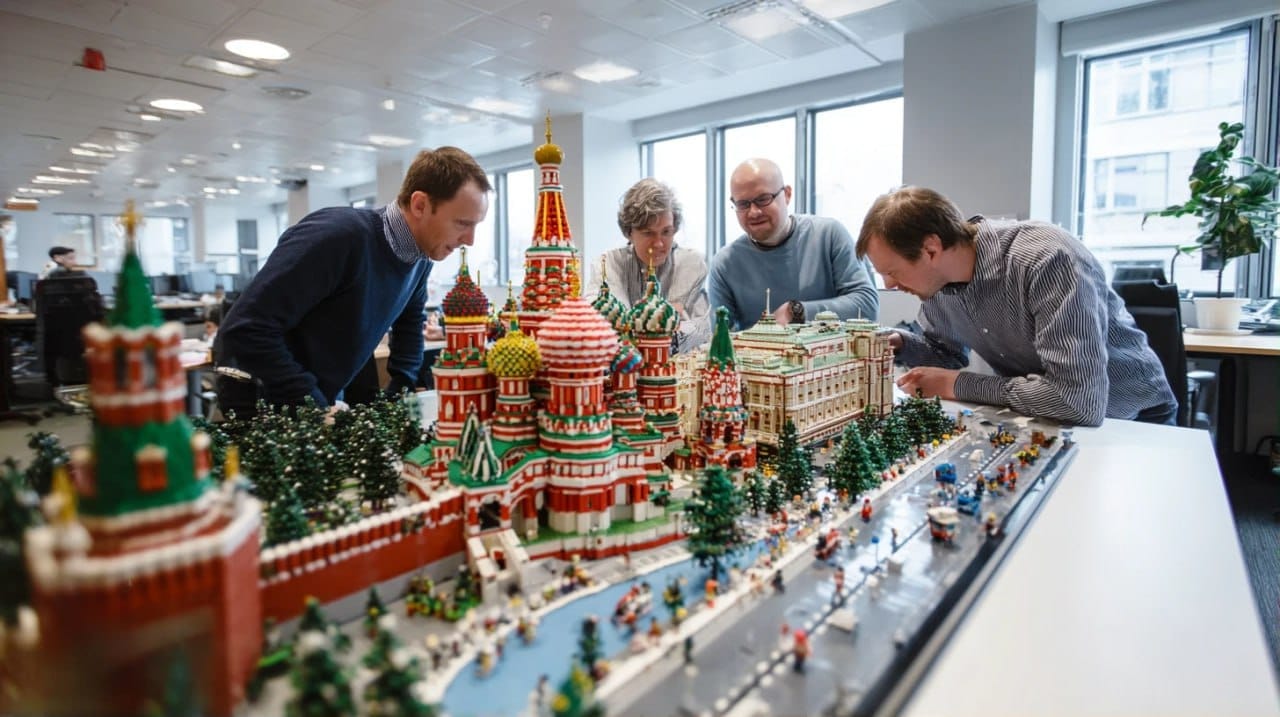Gamification at Work: Boosting Productivity During the Holidays
Adding game elements to the office might sound strange at first. Many people — especially managers — tend to see the workplace as a place with no room for games. But what if routine tasks were transformed into challenges, points, and levels, and every assignment felt like part of a quest?

This is exactly what gamification offers — a modern way to keep employees engaged. And in December, when the festive mood calls for celebration and everyone longs for a change of pace, gamification feels especially relevant.
What Is Gamification?
Gamification is the use of game mechanics in work processes to motivate employees and drive company growth.
When someone steps into an office role, they often leave that “inner child” at the door, believing they must now be serious and focused. In doing so, they lose a huge share of their natural potential.
And the simplest way to awaken the inner child? Introduce play. Gamification does exactly that. When managers create tasks that come with meaningful prizes, employees jump in like kids, celebrating wins and finding joy in the process — much like building a Lego tower brick by brick.
Intrinsic motivation can work wonders. People naturally want to finish what they start, hone their skills, and show what they’re capable of. External motivators — like pressure or rewards — work, but not as deeply. When the desire to succeed comes from within, whether it’s finishing a project, hitting a goal, or unlocking an achievement, it’s far more powerful than waiting for a paycheck at the end of the month.
How Gamification Differs from a Secret Round of Call of Duty at Work
Gamification is not just sneaking in a video game at your desk. It’s a structured system. Employees earn points for completing tasks, move through levels, and collect achievements. Managers can track everything in leaderboards, so feedback is immediate: results show up automatically without delays or waiting for a performance review. This quick response boosts motivation and keeps people engaged.
For comparison:
In a typical office, feedback is rare. You might only hear it in a meeting, during an annual review, or once a project is complete. In a gamified system, feedback appears in real time, turning everyday tasks into something more meaningful and rewarding.
It’s also important to distinguish gamification from simple entertainment. Games and office fun bring positive emotions, but they don’t always lead to results. Gamification, on the other hand, is a deliberate use of game mechanics to reach specific goals: improving motivation, shaping behavior, and increasing engagement and productivity.
And if we compare gamification with children’s games, the difference isn’t just about age. Kids’ play is usually spontaneous and chaotic, with rules that change on the fly and the process itself as the goal. Adult play structures, especially in office gamification, are built like a system: they follow logic and strategy, with clear rules, measurable objectives, and constant feedback. It’s closer to a tactical game where everyone has a role and a way to track results.
There’s also the concept of ludification — creating a playful atmosphere without necessarily tracking goals, points, or levels. The focus is pure fun: think costume holiday parties, themed workshops, or a team sports day.
Why Gamification Is a Truly Useful Tool
Gamification helps employees work with more interest and less stress. Much of it draws inspiration from video games, which became so popular thanks to several core elements:
- Escapism. Video games with rich storylines and expansive worlds let players escape reality, fully immersing themselves in another space. You can do what you love, enjoy adrenaline rushes while completing challenges, drive like a Formula 1 racer, or cook gourmet meals with imaginary ingredients you’ll never find in stores.
- Clear rules. In real life, the boundaries are blurry. To find purpose, you often need to become a whole, self-aware person and stop wandering aimlessly. In games, the structure is given: missions are set, the goals are obvious, and progress is measurable.
- Rewards. Instant reinforcement of success triggers the brain’s pleasure system and causes a dopamine rush. In everyday life, you may wait weeks for recognition — until payday, an annual review, or a performance bonus. In games, feedback is immediate.
- Freedom to try and fail. Games allow risk without fear. If you lose, you simply start over. This builds resilience: the courage to experiment, take on challenges, and not be paralyzed by mistakes. In real life, consequences often feel too heavy, and that fear holds people back.
Some of these advantages translate directly into business. If employees could choose, many would rather stay home, dive into games, watch movies, and immerse themselves in inspiring stories. But when there’s no choice and work must get done, motivation quickly drops, and the office starts to feel like a burden.
Gamification helps shift this perception. Even routine tasks can turn into exciting challenges if they’re framed as part of a game — with clear objectives, visible progress, and real-time rewards.
Gamification in the workplace brings several tangible benefits:
- Deep focus on tasks. When work feels like play, people become fully absorbed in the process. Psychologist Mihaly Csikszentmihalyi called this state flow: maximum satisfaction when someone works on a task that is clear, appropriately challenging, and gives feedback along the way. Gamification can recreate these conditions, turning routine into engagement, progress, and meaning.
- Clear goals and instant feedback. Points, levels, and rewards make performance transparent and give employees a way to adjust while working, without losing productivity. They don’t need to wait for a manager’s praise — progress is visible immediately. That recognition sparks motivation and clarifies direction.
- Higher engagement. Game mechanics keep attention alive and even encourage initiative. Employees are more likely to step forward with ideas and energy when there’s a playful structure.
Healthy competition and teamwork. Leaderboards, team quests, and cooperative challenges create positive dynamics. They encourage collaboration without heavy pressure and make group success feel rewarding.
Gamification and the Holidays
The holiday season is the perfect time to turn the office into a “playground.” Here are a few festive gamification ideas to boost energy, strengthen team spirit, and make December more productive.
Secret Santa
This isn’t just a holiday gift swap — think of it as a stealth mission where the ultimate goal is to deliver your gift in secret.
The easiest way to organize it is through MySanta, an online service that automatically assigns gift givers and receivers. With the PRO version, organizers can track how engaged the team really is:
- Who joined the game first.
- Who’s buying gifts.
- Who’s active in the anonymous group chat, trying to confuse others.
Each completed task earns points on a leaderboard. At the end, you can crown a Santa of the Year — complete with a prize like taking their team out to a holiday dinner.

Holiday Chore Leaderboard
Turn everyday office efforts into a month-long mini-game. Team members can earn points for festive initiatives like:
- Finishing annual report tasks early.
- Decorating their desk or common space.
- Helping coworkers with year-end projects.
- Bringing in the tastiest homemade gingerbread.
By December’s end, rewards can be shared across the team to spread the cheer. Holiday gamification is seasonal and special — and no one should leave empty-handed.
Office Quest
Every good quest has one goal: create an atmosphere of joy, encourage teamwork, and fuel employees with positive energy to carry them through year-end deadlines.
Here’s how it works:
- Split staff into teams of five. Ask each team to come up with a name and a fun chant (yes, just like summer camp).
- The quest unfolds in stages. Each stage is a task, puzzle, mini-challenge, or requirement — for example, performing a kind deed.
- Completing tasks earns points, which can later be exchanged for prizes. Think arcade-style: the more points collected, the bigger the reward.
- At the end, the top-scoring teams gain access to a “secret prize room,” where the final celebration takes place.
Conclusion
Gamification is still a relatively new way to boost motivation, and its full potential hasn’t been completely explored. The key is staying open to experimentation and combining playful elements with business goals.
Don’t lock yourself into one method — try different formats, from Secret Santa leaderboards to office quests. You’ll never know how powerful gamification can be for your workplace until you test it. And if you do, you might not only prevent burnout before the holidays but also inspire your team to end the year on a high note.
